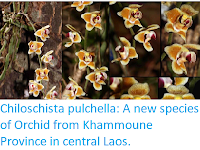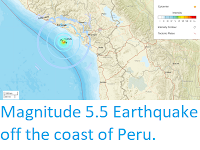Whilst Plants are primarily photosynthetic organisms, a lifestyle retained by the vast majority of species, a few, particularly those living in dark places, have lost this ability, and instead have become parasitic, obtaining nutrients from other organisms. The overwhelming majority of Parasitic Plants are mycoheterotrophs, Plants which parasitise the Mycorrhizal Fungi of other Plants, obtaining nutrients from the Fungi (including those nutrients the Fungi have themselves obtained from other Plants), but not providing the Fungi with anything in return. The evolution of such mycoheterotrophial systems is of great interest to botanists, making Plant groups in which this trait appears to be evolving a focus of study. One such group is the Orchid genus Cremastra, found in the dark understories of temperate forests in the Himalayas and East Asia. The genus Cremastra currently contains five species of Orchid, four of which are leafy, photosynthetic Plants, while the fifth, Cremastra aphylla, from Hokkaido Island, Japan, is a mycoheterotroph which lacks leaves and produces no chlorophyll.
In a paper published in the journal Phytotaxa on 30 November 2021, Kenji Suetsugu of the Department of Biology at Kobe University, describes a new species of Cremastra from Gifu Prefecture in central Honshu, Japan.
The new species is named Cremastra saprophytica, as it is associated with the saprotrophic Fungus Coprinellus disseminates, which obtains nutrients from decaying wood rather than mycorrhizal associations with Plants, apparently making the new species an indirect saprotroph via parasitism of this Fungus.
Unlike Cremastra aphylla, Cremastra saprophytica does produce chlorophyll, although it lacks leaves, and the majority of its nutrition appears to be obtained mycoheterotrophicly. The Plants reach between 28 and 48 cm tall, and produce dark purple, tubular flowers in May and June, followed by green fruiting bodies between June and October. The flowers appear to be entirely self-pollenating, which is a common adaptation in forest understory plants, whose habitat contains few potential pollinators.
Cremastra saprophytica is currently known only from a single location, near the town of Ibigawa in Ibi County. It can be difficult to determine the distribution or range of Parasitic Plants, as they tend o be small and inconspicuous, and are typically found in dark forest understories or other dimly lit places, producing flowers and fruiting bodies at certain times of year. However, the relatively large size and conspicuous flowers of Cremastra saprophytica make it unlikely that it could be very widespread and have remained overlooked.
See also...



Follow Sciency Thoughts on Facebook.
Follow Sciency Thoughts on Twitter.





































